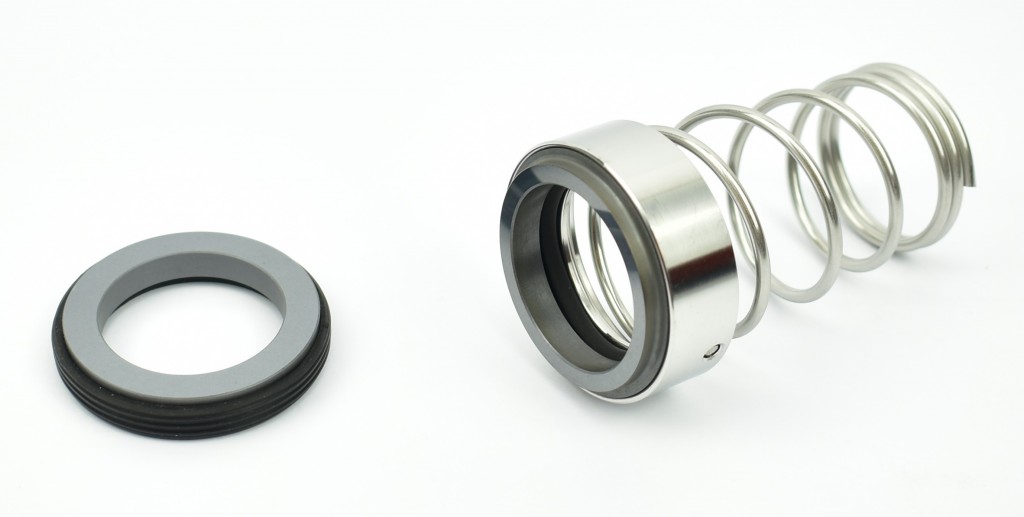Basics of Mechanical Seals
 Mechanical seals are components that exists in a pump. Pumps are used to transfer media (fluid) from a location to another desired location. During the transfer of media, there are movements to assist the media in moving forward, it may be a simple fin rotating to scoop and push the media forward acting as a transferring tool. To rotate this fin there should be a force. The force may come from a manually cranked shaft or an electric motor.
Mechanical seals are components that exists in a pump. Pumps are used to transfer media (fluid) from a location to another desired location. During the transfer of media, there are movements to assist the media in moving forward, it may be a simple fin rotating to scoop and push the media forward acting as a transferring tool. To rotate this fin there should be a force. The force may come from a manually cranked shaft or an electric motor.
In between the force provider and the transferring mechanism, media/ fluid may spill or leak to the force provider, which is not what we want. To solve this issue, a seal is needed to prevent the media from leaking and at the same time, able to provide the flexibility of rotation.
This is where the mechanical seal comes in handy.
A basic mechanical seal consists of two parts: the stationary seal and the rotating seal.
Stationary Seal has a mirror polished surface, it is then surrounded with an elastomer which acts as the sealing operation.
Rotating Seal also has a mirror polished surface, the seal has an inner elastomer which acts as the sealing operation in which it wraps itself onto a rotating shaft.
Both Rotating and Stationary Seal’s mirror polished surface are then pressed against each other, due to the smooth surfaces, the contact between surfaces are so close that fluid is unable to pass through. And because both are smooth surfaces, they are able to rotate against each other with minimal friction.
The spring that is attached to the rotating seal gives an appropriate amount of force to keep two smooth surfaces in contact. During high speed rotations the spring acts as a balancer for the rotating seal as well.
The concept of mechanical seal is then used for different medias and different situations. Some medias are corrosive, some high temperature. There are certain materials that are able to withstand a certain temperature limit before it melts.
The materials of the surface can be selected to suit different medias, which we will elaborate more in our next topic.





